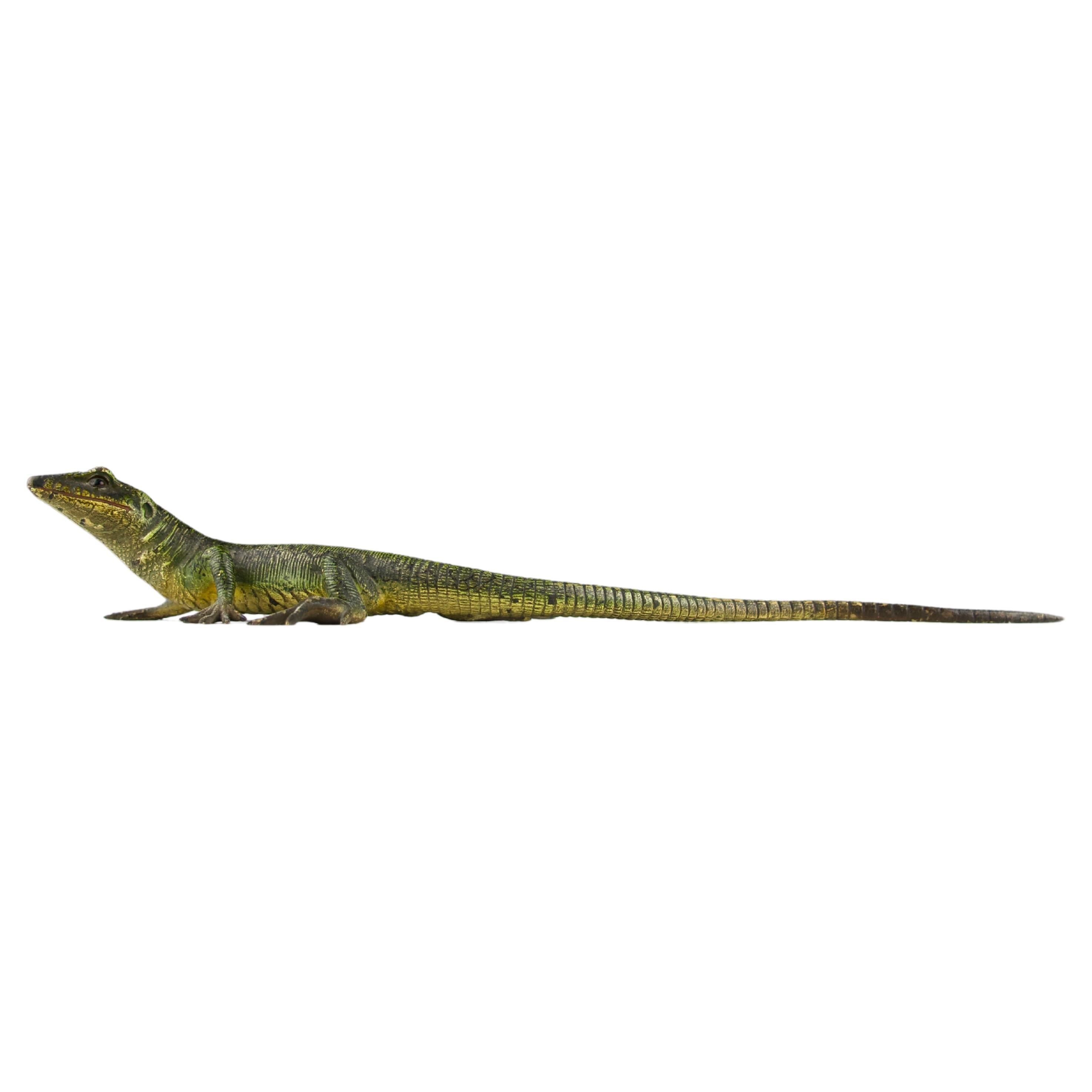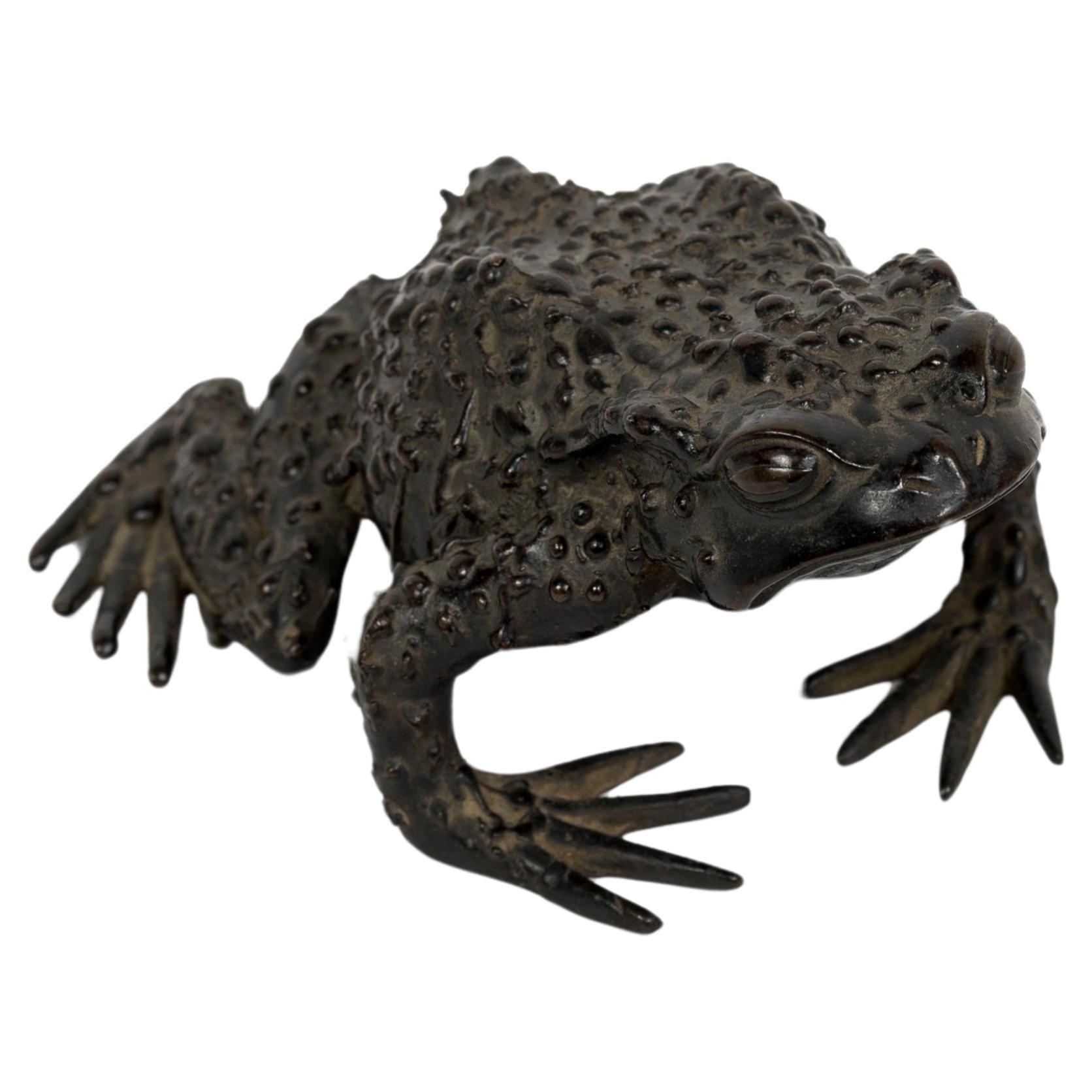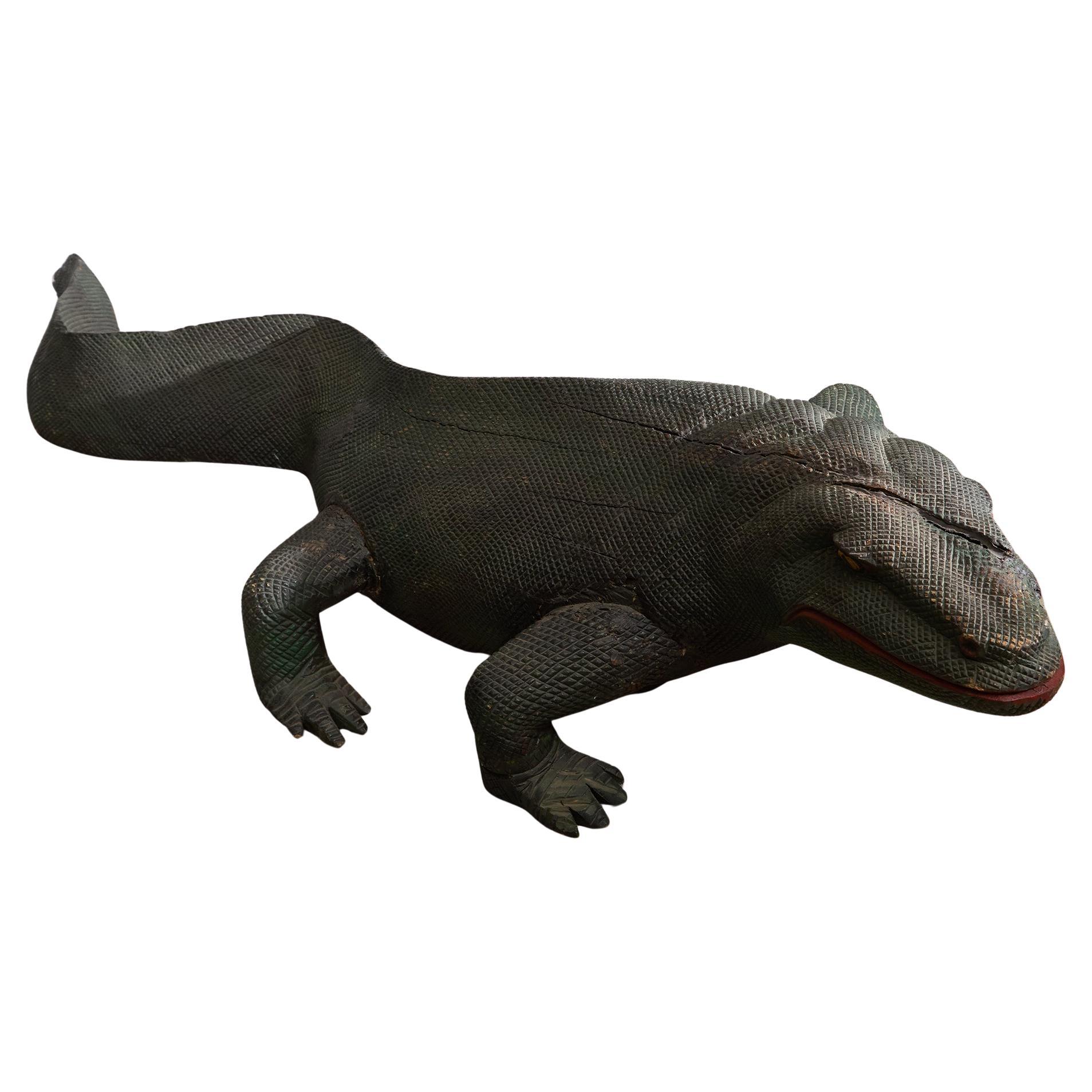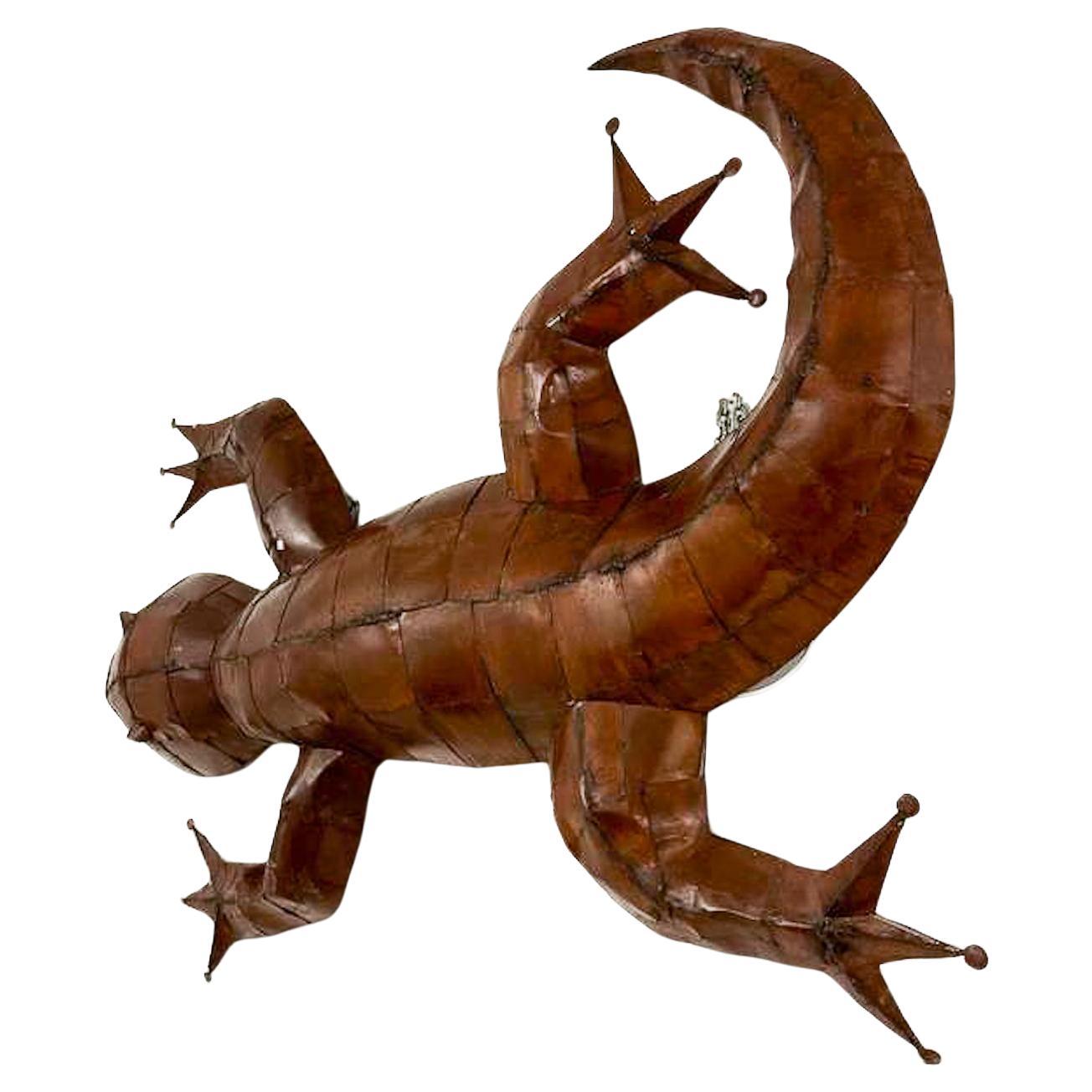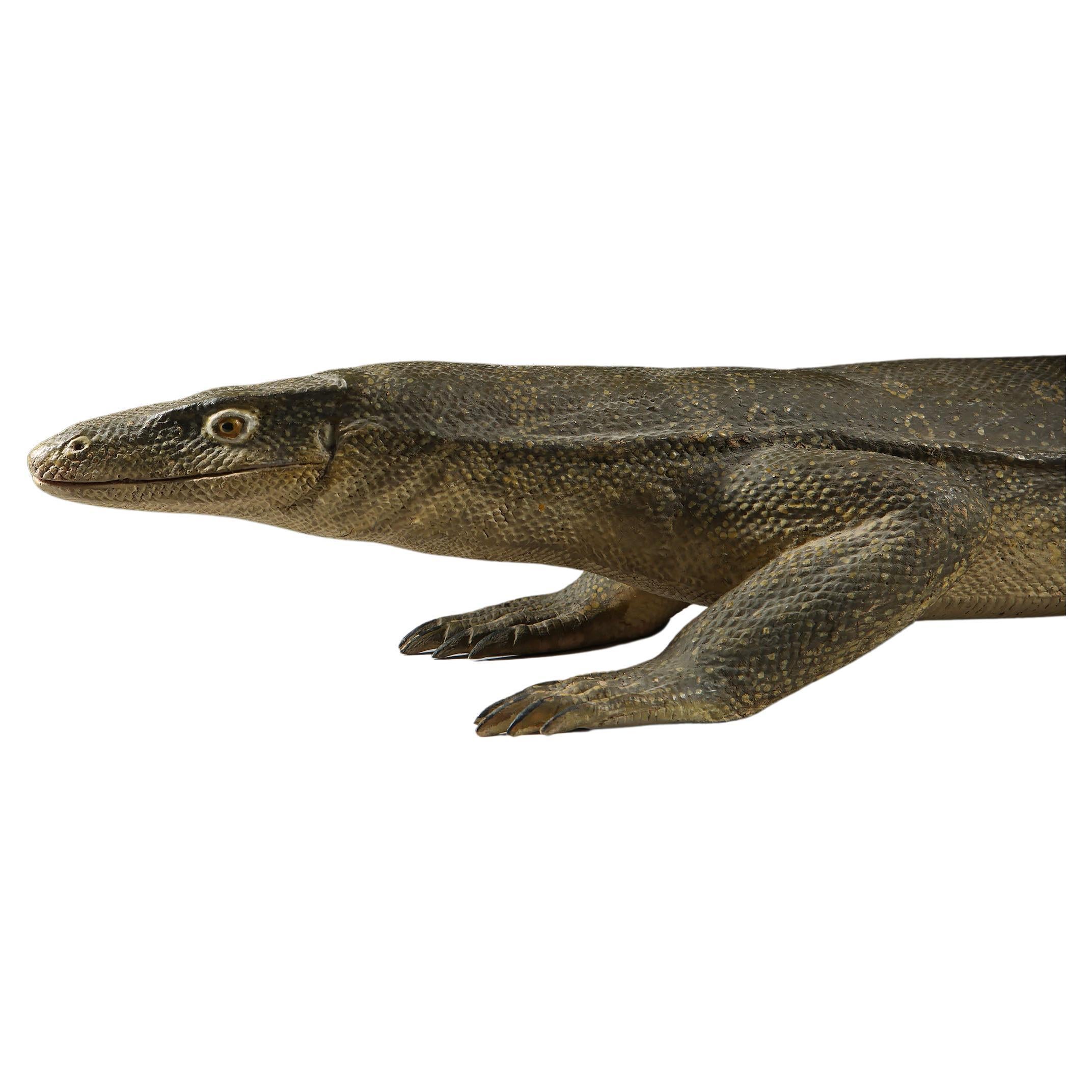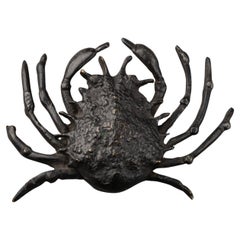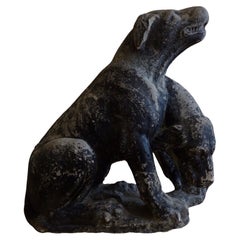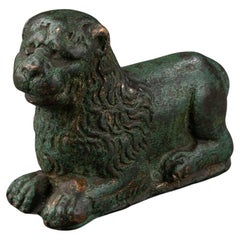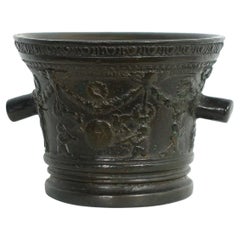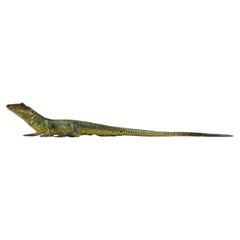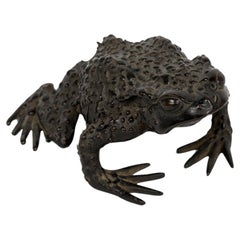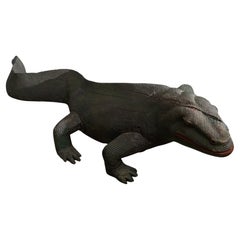Want more images or videos?
Request additional images or videos from the seller
1 of 7
Bronze salamander - 17th century
$1,891.49
£1,424.10
€1,600
CA$2,610.54
A$2,924.38
CHF 1,521.04
MX$35,671.37
NOK 19,364.86
SEK 18,259.68
DKK 12,180.80
About the Item
Bronze salamander
Italy, 17th century
Patinated bronze
4 x 17 x 10 cm
This finely cast bronze salamander exemplifies the 17th-century fascination with naturalistic forms and animal symbolism. Rendered with remarkable detail and lifelike movement, the creature's sinuous body and textured skin reflect both artistic craftsmanship and scientific curiosity of the period. Often associated with fire and transformation in Renaissance and later symbolism, the salamander here may also have served as a decorative object or paperweight.
- Dimensions:Height: 1.58 in (4 cm)Width: 6.7 in (17 cm)Depth: 4.34 in (11 cm)
- Style:Renaissance (Of the Period)
- Materials and Techniques:Bronze,Cast
- Place of Origin:
- Period:
- Date of Manufacture:17th century
- Condition:Wear consistent with age and use.
- Seller Location:Bruxelles, BE
- Reference Number:1stDibs: LU6666245084292
About the Seller
5.0
Vetted Professional Seller
Every seller passes strict standards for authenticity and reliability
1stDibs seller since 2022
15 sales on 1stDibs
Typical response time: 2 hours
- ShippingRetrieving quote...Shipping from: Bruxelles, Belgium
- Return Policy
Authenticity Guarantee
In the unlikely event there’s an issue with an item’s authenticity, contact us within 1 year for a full refund. DetailsMoney-Back Guarantee
If your item is not as described, is damaged in transit, or does not arrive, contact us within 7 days for a full refund. Details24-Hour Cancellation
You have a 24-hour grace period in which to reconsider your purchase, with no questions asked.Vetted Professional Sellers
Our world-class sellers must adhere to strict standards for service and quality, maintaining the integrity of our listings.Price-Match Guarantee
If you find that a seller listed the same item for a lower price elsewhere, we’ll match it.Trusted Global Delivery
Our best-in-class carrier network provides specialized shipping options worldwide, including custom delivery.More From This Seller
View AllBronze crabe - Padua, 18th century
Located in Bruxelles, BE
Bronze crabe
Padua, 18th century
bronze
2 x 10 x 7 cm
(One of the crab’s legs is missing its end)
This finely cast bronze sculpture of a crab reflects the enduring interest in natur...
Category
Antique Mid-18th Century Italian Renaissance Revival Animal Sculptures
Materials
Bronze
Cerberus, Italy, 17th Century
Located in Bruxelles, BE
Cerberus
Black painted stone
Italy, 17th century
Measures: 80 x 69 x 36cm
(one head missing)
Cerberus, cruel monster, fierce and strange,
Through his wide threefold throat barks as a dog
Over the multitude immers'd beneath.
His eyes glare crimson, black his unctuous beard,
His belly large, and claw'd the hands, with which
He tears the spirits, flays them, and their limbs
Piecemeal disparts (Dante, Inferno, Canto VI).
Cerberus figure seated, in his role of ferocious guardian of the underworld; he shows a nervous musculature, an adherent skin which reveals the ribs, long and robust limbs; his heads are broad and the eyes set well apart.
Painted in black to amplify his menacing look, the infernal guardian is depicted with his famous attributes, writhing his heads, growling and barking furiously.
Cerberus, in Greek mythology, was the monstrous watchdog of the underworld – also known as the “hound of Hades” – preventing the dead from leaving, and making sure that those who entered never left.
A child of Typhon and Echidna, he was part of a monstrous family, which included Orthus, the Lernaean Hydra, and the Chimaera as well. Only on three occasions Cerberus was tricked by visitors of Hades: Heracles did it with his strength, Orpheus with his music.
In "The Inferno", Dante places Cerberus as the guardian of the third circle of Hell. With his three mouths, Dante saw Cerberus as a beast that was synonymous with the sin of Gluttony. Virgil gets past the monster by throwing mud in his three mouths, temporarily choking him.
Very rare are the representations of Cerberus in ancient statuary...
Category
Antique 17th Century Italian Renaissance Figurative Sculptures
Materials
Stone
$19,505 Sale Price
25% Off
reclining lion in finely chased bronze - Italy, 15th century
Located in Bruxelles, BE
Small reclining lion in finely chased bronze
Italy, 15th century
Traces of gilding
H 4,8 x L 6 x P 2 cm
Delicately worked bronze depicting a lion in repose, characteristic of early ...
Category
Antique 15th Century and Earlier Italian Gothic Animal Sculptures
Materials
Bronze
Bronze Mortar, Tuscany, Second Half of 16th Century
Located in Bruxelles, BE
Bronze mortar with garlands, flowers and putti - Tuscany , second half of 17th century.
Measures: height 10
diameter : 13 cm
Artisans and healers used mortars for grinding food...
Category
Antique 16th Century Italian Renaissance Scientific Instruments
Materials
Bronze
Pacing Horse - Italian School, 18th century
Located in Bruxelles, BE
Italian School, 18th century
Pacing Horse
Bronze with brown patina, on a rectangular marble base
H 8 x L 8,5 x P 3 cm
H totale 11 cm
Category
Antique 18th Century Italian Baroque Animal Sculptures
Materials
Marble, Bronze
Renaissance grotesque in the shape of a half-moon - France, 17th century
Located in Bruxelles, BE
Large grotesque in the shape of a half-moon
On a posterior cement base
Limestone
France, 17th century
72 x 42 x 51 cm
Category
Antique 17th Century French Renaissance Statues
Materials
Limestone
You May Also Like
Vienna Bronze, Lizard, Late 19th Century
By Geschutzt
Located in PARIS, FR
Superb and large 19th century Vienna bronze of a lizard by the Geschütz manufacture. Not signed.
Dimensions in cm ( H x L x L ) : 4 x 28 x 9.
Secure shipping.
Category
Antique Late 19th Century Austrian Romantic Animal Sculptures
Materials
Bronze
Japanese bronze okimono toad (sculpture)
Located in PARIS, FR
Okimono bronze sculpture of a large toad in a crouching position, possibly about to jump.
The toad and the frog, referred to by the same term in Japanese (kaeru), are associated with...
Category
Antique Mid-19th Century Japanese Japonisme Metalwork
Materials
Bronze
Large 20th Century Bronze Crocodile
Located in Southall, GB
Large 20th century bronze crocodile. Patina to the bronze is superb and of course being bronze this can live outside with no fear of rusting.
Category
Late 20th Century English Animal Sculptures
Materials
Bronze
$7,586 Sale Price
20% Off
Wooden Varanus Sculpture
Located in Budapest, HU
A wooden varanus statue, or rather a genuine masterpiece! Crafted from solid wood, this charming piece showcases intricate, meticulously carved details that bring the essence of the ...
Category
Late 20th Century Italian Animal Sculptures
Materials
Wood
$2,472 Sale Price
20% Off
Mid-Century Large Lizard Wall Sculpture
Located in Brussels, BE
Mid-Century Large Lizard Wall Sculpture
Category
20th Century Decorative Art
Materials
Metal
Carved Wood Figure of a Komodo Dragon Lizard, Indonesia, 20th Century
Located in London, by appointment only
Realistically carved wood Komodo Dragon, with green and yellow-painted scales
Size: 14cm high; 126cm long.
Category
20th Century Animal Sculptures
Materials
Teak
More Ways To Browse
17th Century Italian Furniture
Antique Salamander
Standing Peacock
Tabletop Bookcase
Vintage Furniture Kenya
Wooden Carved Eagles
Bird Figurines Italian
Brass Cat Sculpture
Bronze Horse Rider Sculpture
Murano Dove
Pair Tusks
Pottery Owl
Squirrel Sculpture
Victorian Staffordshire Animals
Weller Frog
Whippet Dog
Carved Wooden Bears
Wood Carved Dog Head
